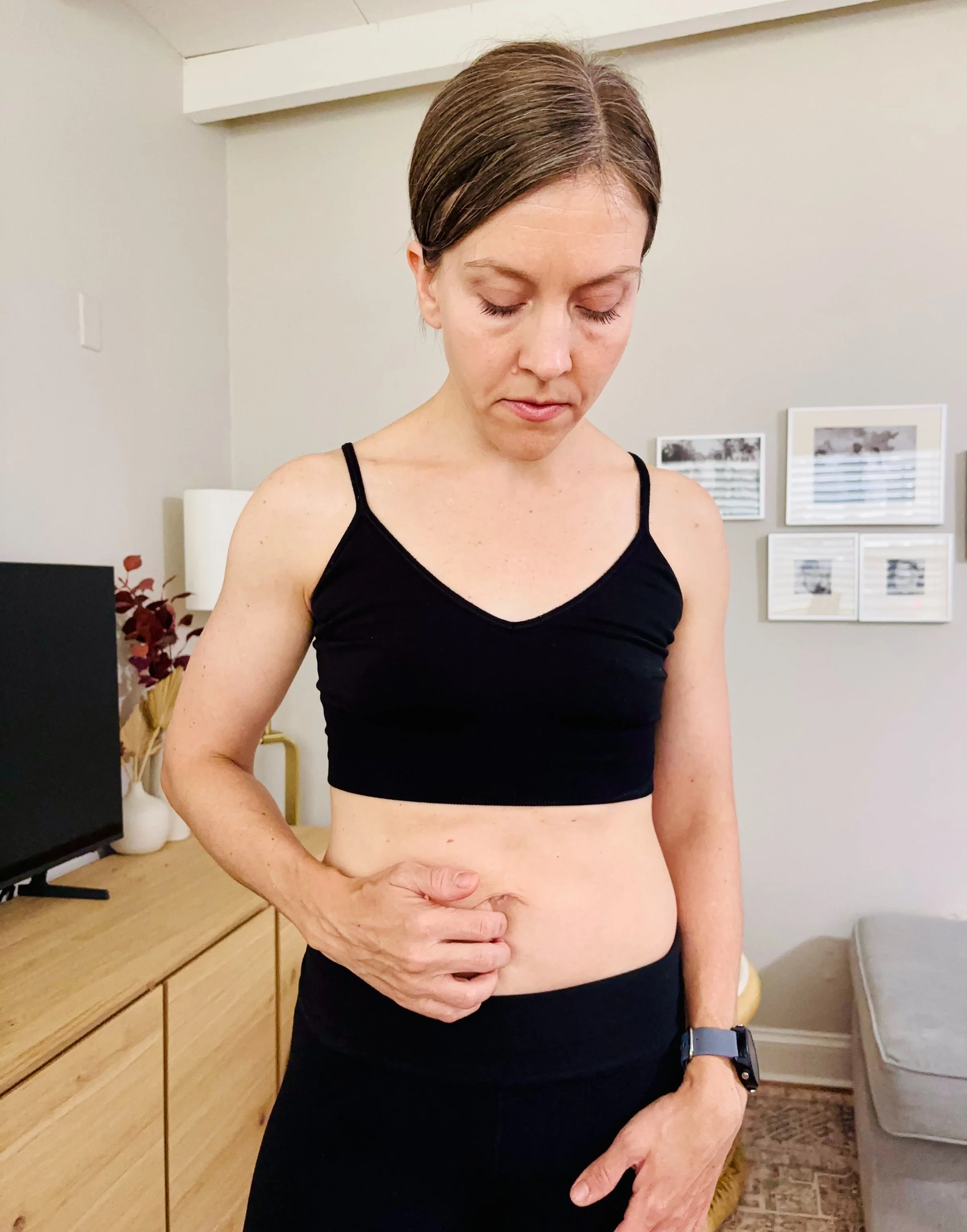Diastasis Recti: What It Is, Why It Happens, and How to Heal Your Core Safely
You’ve probably heard the term diastasis recti (or “ab separation”) tossed around in postpartum circles lately. It feels like everyone is talking about it—coaches, trainers, therapists—and of course, everyone has their own solution. Honestly? I love that it’s finally getting the attention it deserves. The more we talk about it, the better.
From a Physical Therapist’s perspective, I completely understand the aesthetic side of wanting to address it. (Trust me—I’ve been there too.) But I also want to emphasize something that often gets overlooked: there’s a functional component to diastasis recti as well. It’s not just about how your belly looks—it’s about how your body moves, supports itself, and manages pressure.
There’s a lot we can do to address it postpartum. And - it’s also important to understand that we can take steps during pregnancy to reduce the severity of it (because a very large percentage of pregnant folks will experience some degree of abdominal separation). I talk about this more in this post, so check it out. (I also suggest hitting Subscribe to my Newsletter to be first to know when future posts drop).
So before we dive into how to heal it, let’s start with the basics: What exactly is diastasis recti?
✨ What Is Diastasis Recti?
Diastasis recti refers to a separation of the abdominal muscles (think, six pack muscles) along the midline of your belly. At the midline, a connective tissue called the linea alba stretches during pregnancy to make room for your growing baby. This separation is completely normal during pregnancy—but for some people, it lingers well beyond birth, leaving a “gap” between the abdominal muscles and often contributing to:
A protruding or domed belly ("mommy tummy")
Core weakness or instability
Lower back pain
Poor posture
Pelvic floor issues like leaking or heaviness
Is It Just About Looks?
Nope! As mentioned above, diastasis recti is not just aesthetic in nature. It affects the ability of our muscles to function properly. While many people notice it because of how their belly looks, it is so important to consider core function and the ability of your body to manage pressure during movement. A lingering diastasis can affect:
How you lift your kids
How you exercise
How you breathe
Pelvic floor health (yes, it’s all connected!)
How Do You Know If You Have Diastasis Recti?
Most folks notice a coning or doming along the midline when they do certain exercises or movements, such as sitting up, getting out of bed, or lifting their little one(s). You may also notice a gap between your abdominal muscles. Check out my Diastasis Recti Freebie to learn how to do a self-assessment.
If you’re unsure, a Pelvic Health Physical Therapist (like me!) can assess you and guide you safely. Schedule an appointment with me for 1:1 support in managing your ab separation.
Can You Heal Diastasis Recti?
Yes! While some degree of separation may always be present (and that’s okay!), most people can significantly improve their core strength, stability, and appearance with selection of the right exercises. You will want to focus on the following:
Breathwork and diaphragmatic breathing
Deep core activation (transversus abdominis)
Pelvic floor coordination
Posture and pressure management
Where to Start?
The first step in healing your core isn’t fancy workouts—it’s breathing. I know, I know. ALL I talk about is breathing, but it really is the foundation to core and pelvic floor health.
Learning to regulate your intra-abdominal pressure through diaphragmatic breathing lays the foundation for all other exercises.
From there, gradually incorporating deep core activations and functional movements helps rebuild your body’s natural support system—safely and sustainably.
My Personal Take (from a Twin Mom + Pelvic PT)
After my twin pregnancy, I experienced diastasis recti myself—and honestly, it was humbling. Even with my background as a Pelvic PT, it was a process to heal, reconnect with my core, and build strength again, which I ams till working on.
What I learned?
➡️ Progress isn’t linear.
➡️ Small, consistent steps make a big difference.
➡️ Your body isn’t broken—it just needs support.
You’re Not Alone (and You Don’t Have to Figure It Out Alone)
Diastasis recti is common, but that doesn’t mean you have to just “live with it.”
If you’re ready to take the first gentle step toward core healing, you can start today with simple breath work and pelvic floor awareness—right at home. Check out my posts here & here to get started.
Check out This Post where I share specific exercises to help support diastasis recti recovery. 💜 Want to be the first to know when it drops? Be sure to sign up for my newsletter!
Disclaimer: This post is educational and not a substitute for medical care. If you have concerning symptoms, please consult your healthcare provider.
